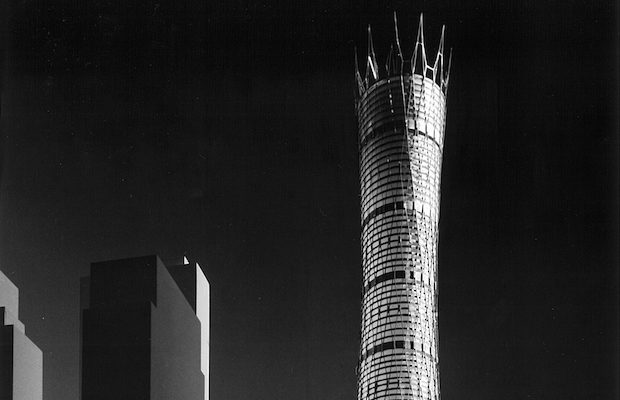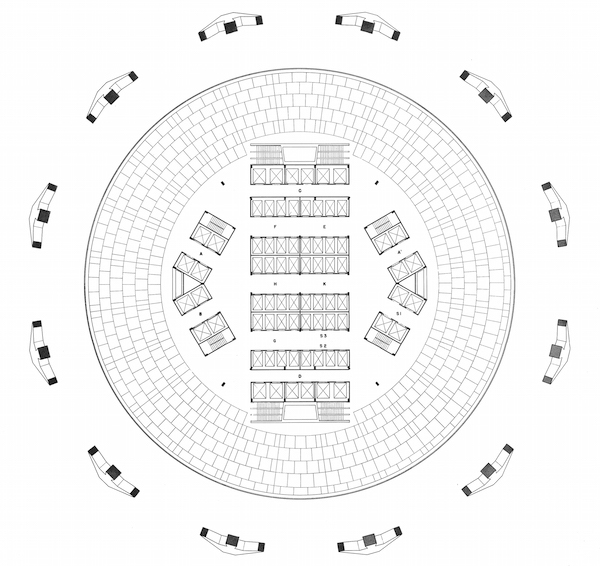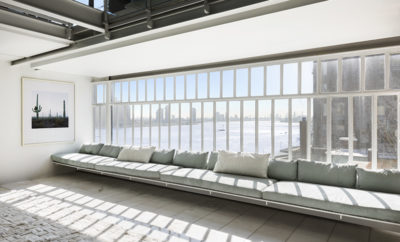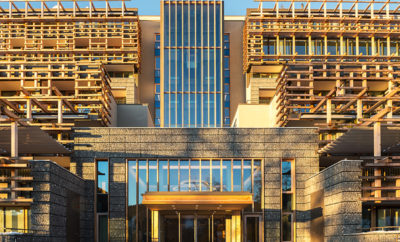
Exhibition
Strange and Amusing Plans
Sam Lubell is a New York City-based writer and has written seven books about architecture for Phaidon, Rizzoli, Metropolis Books, and Monacelli Press. He also writes for the New York Times, the Los Angeles Times, the Atlantic, Architectural Record, Wallpaper, the Architect’s Newspaper, and Wired, among other publications. He is co-curator of the exhibition Never Built New York, which will run from September 17 to February 18, 2018, at the Queens Museum.
IN THE 1950s, AS STRUGGLING RAILROADS nationwide began to sell their holdings to make up for severe revenue losses, Robert Young, chairman of the ailing New York Central Railroad, began to seek redevelopment proposals for Grand Central.
Young teamed up with real estate developer William Zeckendorf, one of the epoch’s greatest dreamers and a legendary showman who proposed some of the strangest, most amazing plans the city has ever seen. Together with Zeckendorf’s personal architect, I. M. Pei—who worked for the developer for seven years before starting his own firm—they designed the Hyperboloid, a 1,497-foot-tall office tower and transit hub that would replace Grand Central with one of the most advanced buildings in the world.

The 108-story, $100-million edifice, spanning a nine-acre site, would have been the world’s tallest (and costliest) structure, besting the Empire State Building by more than two hundred feet. Set back from a plaza and stacked at its base with a skylit transportation center for trains, buses, cars, and subways, it narrowed quickly as it rose. But at the top, the structure widened again, giving it a distinct hourglass shape. This form sharply reduced wind forces and required far less structural steel.
A dense grouping of diagonal columns along the building’s exterior redistributed the gravitational loads across the web-like surface, transferring that vertical burden to huge footings. Traffic would speed by on curved roads winding around the building.
Zeckendorf described the plan as more valuable than a “second-rate beaux-arts building. The main hall is to me not really a great space. One look and you’ve seen it all. Great spaces should be infinitely varied, constantly changing.” But Young, beleaguered by the railroad’s plummeting profits and by a Senate investigation of the industry’s decline, committed suicide in January 1957, halting any hope for the structure.

Hyperboloid is one of the many projects featured in Never Built New York, opening on September 17 at the Queens Museum. One of the most active times in “Never Built” history was the mid century, when the grand visions of modernist architects and planners were often stymied by the realities of funding and politics. The exhibition will catapult visitors into an alternate dimension, chronicling ambitious architectural and urban plans that never made it past the drawing board. Through original prints, drawings, models, animations, and large-scale installations, the exhibition invites visitors to re-imagine the city that could have been.












